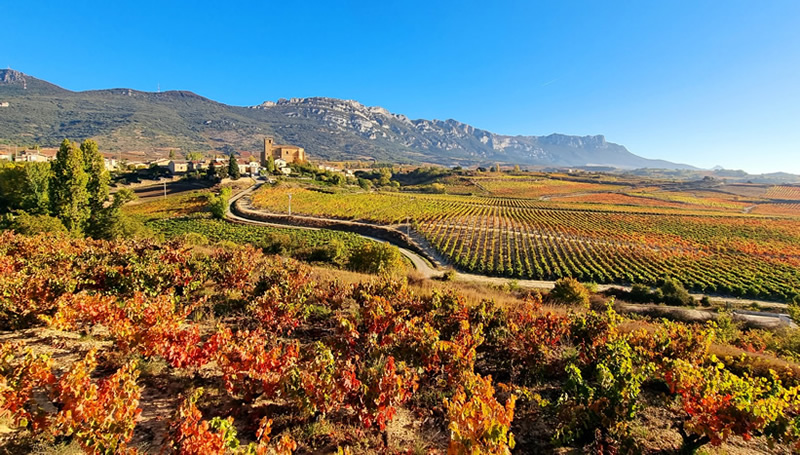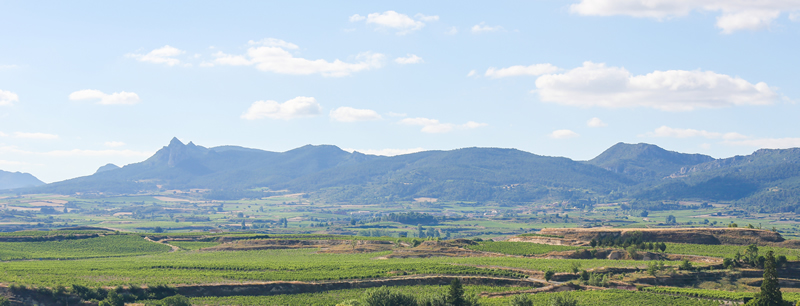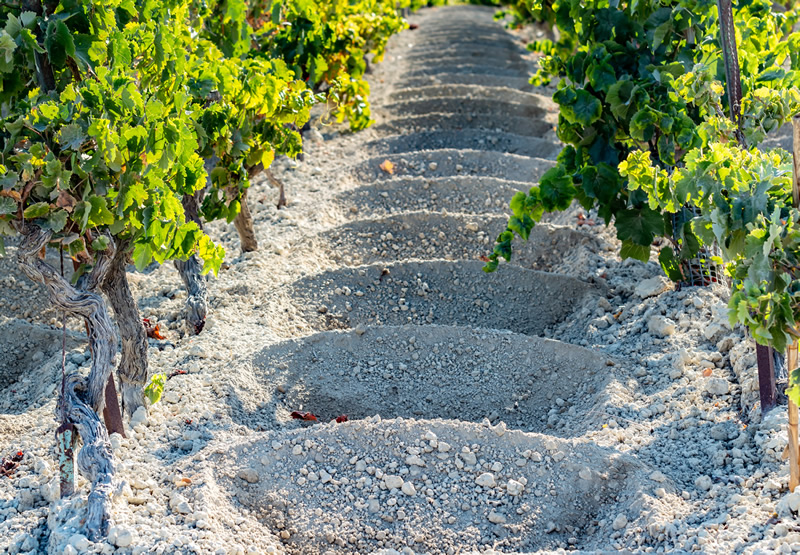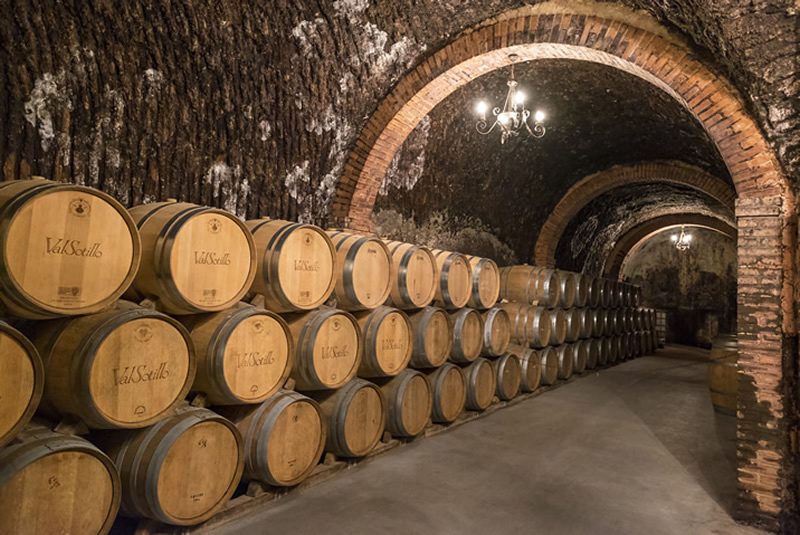Spain
Vineyards of Spain: the wine regions and their particularities

Vineyards in the Rioja Alavesa
Spain is home to a diverse range of wine regions, each offering distinctive wines shaped by their unique terroirs, grape varieties, and winemaking traditions. Below is an exploration of the major Spanish wine regions, their notable wines, and general tasting notes, presented in an order reflecting their significance.

La Rioja
1. Rioja
Notable Wines:
- Rioja (Red): Primarily made from Tempranillo, often blended with Garnacha, Graciano, and Mazuelo (Carignan). Rioja wines are categorized into four types based on aging: Joven, Crianza, Reserva, and Gran Reserva. They range from young and fruity to complex, with deep flavors of red berries, vanilla, and spices from oak aging.
- Rioja (White): Made mostly from Viura (Macabeo), these wines can be crisp and fresh or rich and creamy, depending on the winemaking style and oak aging.
Particularities:
Rioja is Spain's most famous wine region, known for its commitment to quality and tradition. The region's wines, particularly its aged reds, are celebrated for their balance and elegance. The use of American oak barrels is a hallmark of traditional Rioja wines.
A cellar in la Ribero del Duero
2. Ribera del Duero
Notable Wines:
- Ribera del Duero (Red): Made primarily from Tempranillo (locally known as Tinto Fino or Tinta del País), these wines are powerful and full-bodied, with flavors of dark fruit, plum, tobacco, and often a touch of vanilla from oak aging. Like Rioja, Ribera del Duero wines are classified by aging, from Crianza to Gran Reserva.
Particularities:
Ribera del Duero is one of Spain's most prestigious wine regions, known for producing some of the country’s most acclaimed and expensive wines. The high altitude of the vineyards contributes to the wines' intensity and aging potential.
3. Priorat
Notable Wines:
- Priorat (Red): These wines are typically made from Garnacha (Grenache) and Cariñena (Carignan), sometimes blended with international varieties like Cabernet Sauvignon and Syrah. Priorat wines are known for their intense concentration, high alcohol, and flavors of black fruit, licorice, and mineral notes, often with a distinct earthy character due to the region’s slate soils (known as "llicorella").
Particularities:
Priorat is one of Spain's only two DOCa (Denominación de Origen Calificada) regions, the other being Rioja. The region's rugged terrain and old vines produce powerful, age-worthy wines that are highly sought after worldwide.
4. Cava (Penedès)
Notable Wines:
- Cava: A sparkling wine made using the traditional method (same as Champagne) from local grape varieties such as Macabeo, Xarel·lo, and Parellada. Cava is known for its refreshing acidity, citrus and apple flavors, and fine bubbles. It ranges from Brut Nature (very dry) to Dulce (sweet).
Particularities:
Cava is Spain's answer to Champagne, produced mainly in the Penedès region near Barcelona. While it is a sparkling wine, Cava is often more affordable than its French counterpart, making it popular both in Spain and internationally.

The Jerez albariza soil worked out to retain as much water as possible
5. Sherry (Jerez)
Notable Wines:
- Fino: A dry, pale Sherry with flavors of almonds, olives, and a salty tang, typically enjoyed as an aperitif.
- Manzanilla: Similar to Fino but produced in the coastal town of Sanlúcar de Barrameda, giving it a slightly more delicate and salty character.
- Amontillado: A Sherry that starts as a Fino but undergoes further aging, leading to a darker color and richer, nuttier flavors.
- Oloroso: A dark, rich Sherry with flavors of dried fruit, nuts, and caramel, typically sweet or dry.
- Pedro Ximénez: A very sweet, dark Sherry made from sun-dried Pedro Ximénez grapes, known for its rich flavors of raisins, figs, and chocolate.
Particularities:
Sherry is one of Spain’s most distinctive wines, with a unique aging process that involves a system of barrels called solera. Sherry’s diversity of styles—from dry and light to rich and sweet—makes it one of the most versatile wines in the world.
6. Rías Baixas
Notable Wines:
- Albariño: The flagship white wine of Rías Baixas, made from the Albariño grape. Albariño is known for its high acidity, vibrant citrus, and stone fruit flavors, with a touch of saline minerality. It is typically crisp, fresh, and aromatic, often compared to Riesling or Sauvignon Blanc.
Particularities:
Located in Galicia, in Spain’s northwest, Rías Baixas is famous for its cool, Atlantic climate, which is ideal for producing refreshing white wines. Albariño from this region is widely regarded as one of Spain's finest white wines and pairs exceptionally well with seafood.
7. Rueda
Notable Wines:
- Verdejo: The primary white wine of Rueda, Verdejo is aromatic with flavors of green apple, citrus, and fennel, often with a slight bitterness on the finish. When made in a more modern style, Verdejo can be more fruit-forward and even slightly tropical.
- Rueda (Blanco): Wines labeled as Rueda can include blends of Verdejo with Sauvignon Blanc or Viura, offering a range of styles from crisp and fresh to fuller and creamier versions.
Particularities:
Rueda is Spain's most important white wine region, known for producing refreshing and aromatic wines that are increasingly popular both in Spain and abroad.
8. Toro
Notable Wines:
- Toro (Red): Made predominantly from Tinta de Toro (a local clone of Tempranillo), these wines are robust, with high alcohol content, flavors of ripe dark fruit, and often significant tannins. Toro wines are powerful and structured, with a rustic charm that sets them apart from other Tempranillo-based wines.
Particularities:
Toro is an emerging star among Spanish wine regions, offering bold, intense wines that have garnered attention for their quality and value. The region’s hot, dry climate contributes to the concentration and power of its wines.
9. Navarra
Notable Wines:
- Garnacha (Rosado): Navarra is known for its rosé wines made from Garnacha, which are vibrant, fruity, and refreshing with flavors of red berries and a crisp acidity.
- Navarra (Red): The region also produces high-quality red wines, often blending Tempranillo with international varieties like Cabernet Sauvignon and Merlot, resulting in wines that are both structured and approachable.
Particularities:
Navarra is located just northeast of Rioja and has traditionally been known for its rosé wines. However, in recent years, it has gained recognition for its diverse range of high-quality reds and whites, making it one of Spain’s most versatile wine regions.
10. Jumilla
Notable Wines:
- Monastrell: Jumilla is famous for its Monastrell (Mourvèdre) wines, which are full-bodied, with intense flavors of black fruit, herbs, and spices. These wines are often rich and rustic, with a natural affinity for oak aging.
Particularities:
Jumilla, located in southeastern Spain, has undergone a renaissance in recent years, moving from bulk production to focusing on quality wines. The region’s dry, hot climate is ideal for growing Monastrell, resulting in concentrated and powerful wines that offer great value.
11. La Mancha
Notable Wines:
- La Mancha (Red and White): La Mancha produces a wide variety of wines, both red and white, using native and international grape varieties. The region’s reds, often made from Tempranillo, and its whites, often made from Airén, offer good value and are widely consumed in Spain.
Particularities:
La Mancha is the largest wine region in Spain and one of the largest in the world. While historically known for bulk wine production, La Mancha has been improving the quality of its wines, offering both affordable and increasingly refined options.
12. Montsant
Notable Wines:
- Montsant (Red): Similar to its neighbor Priorat, Montsant produces robust red wines from Garnacha and Cariñena. These wines are often fruit-forward, with flavors of ripe berries, spices, and a mineral backbone. They offer a more accessible and affordable alternative to Priorat wines.
Particularities:
Montsant is a relatively young DO (Denominación de Origen), but it has quickly gained a reputation for producing high-quality wines. Its wines are often compared to those of Priorat, but they tend to be more approachable and offer excellent value.
13. Valdeorras
Notable Wines:
- Godello: The flagship white wine of Valdeorras, Godello is known for its complexity, with flavors of citrus, apple, and pear, along with a characteristic minerality. It often has a fuller body and more structure than Albariño, making it a rising star among Spanish white wines.
Particularities:
Located in Galicia, Valdeorras has gained recognition for its white wines, particularly Godello, which is often seen as a more serious, age-worthy alternative to Albariño. The region’s cool climate and diverse soils contribute to the distinctiveness of its wines.
14. Bierzo
Notable Wines:
- Mencía: Bierzo is known for its red wines made from the Mencía grape, which are medium-bodied, with bright acidity and flavors of red fruit, herbs, and floral notes. Mencía wines from Bierzo are often compared to those from the Loire Valley, offering elegance and freshness.
Particularities:
Bierzo, located in the northwest of Spain, has seen a resurgence in recent years, with Mencía leading the charge. The region’s cool climate and unique terroir produce wines that are both complex and approachable, making it a favorite among sommeliers and wine enthusiasts.
15. Somontano
Notable Wines:
- Somontano (Red and White): Somontano produces a variety of wines, including reds from Tempranillo, Garnacha, and international varieties, as well as whites from Chardonnay and Gewürztraminer. The reds are often bold and fruit-driven, while the whites are aromatic and fresh.
Particularities:
Located in the foothills of the Pyrenees, Somontano is a region known for its innovation and diversity of wine styles. The region’s unique microclimate allows for the production of both traditional and international varieties, catering to a wide range of tastes.
16. Costers del Segre
Notable Wines:
- Costers del Segre (Red and White): This region produces a range of wines, including robust reds from Tempranillo, Garnacha, and international varieties, as well as fresh, crisp whites from Macabeo and Chardonnay.
Particularities:
Costers del Segre is an inland DO in Catalonia that is known for its innovative approach to winemaking. The region’s wines are often characterized by their balance and expression of terroir, with a growing reputation for quality.
General Tasting Notes for Main Spanish Wines
- Rioja (Red): Complex with flavors of red berries, vanilla, and spices. Aging in American oak adds notes of coconut and dill. Gran Reservas are particularly nuanced, with softer tannins and a velvety texture.
- Ribera del Duero (Red): Powerful and full-bodied, with dark fruit flavors, plum, tobacco, and vanilla from oak aging. The wines are rich and structured, often requiring time to soften.
- Priorat (Red): Intense concentration with high alcohol, black fruit, licorice, and a distinct minerality. The wines are bold, complex, and often need aging to fully express their depth.
- Cava: Refreshing acidity with flavors of citrus, apple, and toast. The bubbles are fine, and the overall experience is crisp and clean, making it a versatile sparkling wine.
- Sherry (Jerez):
- Fino: Light and dry, with almond and olive flavors, and a pronounced salty tang.
- Amontillado: Richer with nutty, oxidative notes, and a darker color.
- Pedro Ximénez: Very sweet with flavors of raisins, figs, and chocolate, thick and syrupy in texture.
- Albariño (Rías Baixas): Crisp and aromatic with vibrant citrus and stone fruit flavors, a touch of saline minerality, and high acidity. Perfectly pairs with seafood.
- Verdejo (Rueda): Aromatic with flavors of green apple, citrus, and fennel, sometimes tropical, with a crisp, slightly bitter finish.
- Toro (Red): Bold with high alcohol, flavors of ripe dark fruit, and significant tannins. The wines are robust and structured, with a rustic charm.
- Monastrell (Jumilla): Full-bodied with intense black fruit, herbs, and spices. The wines are rich, often with a rustic edge, and can handle oak aging well.
- Mencía (Bierzo): Medium-bodied with bright acidity and flavors of red fruit, herbs, and floral notes. The wines are elegant and fresh, with a balance of fruit and earthiness.
Vineyards.com
